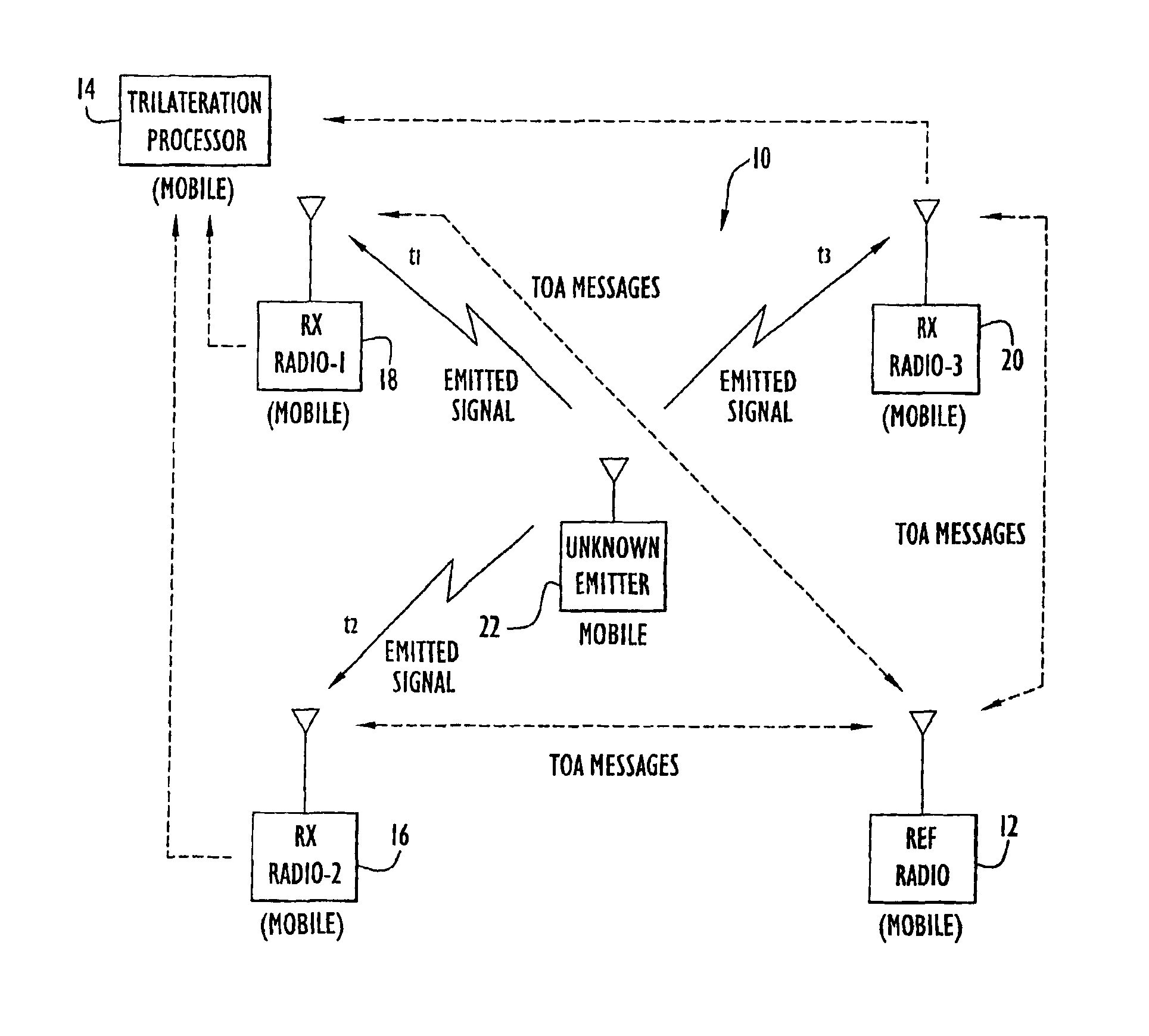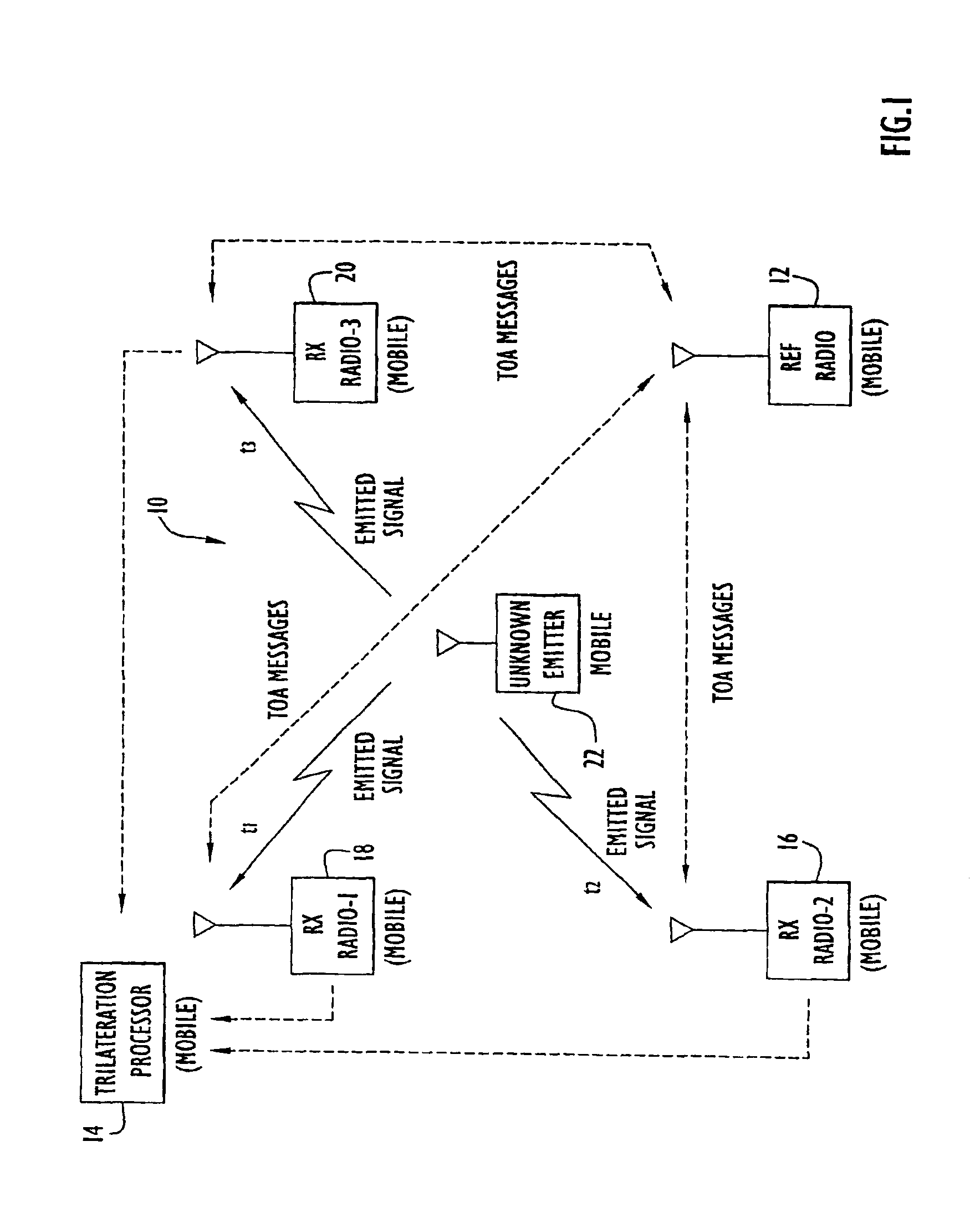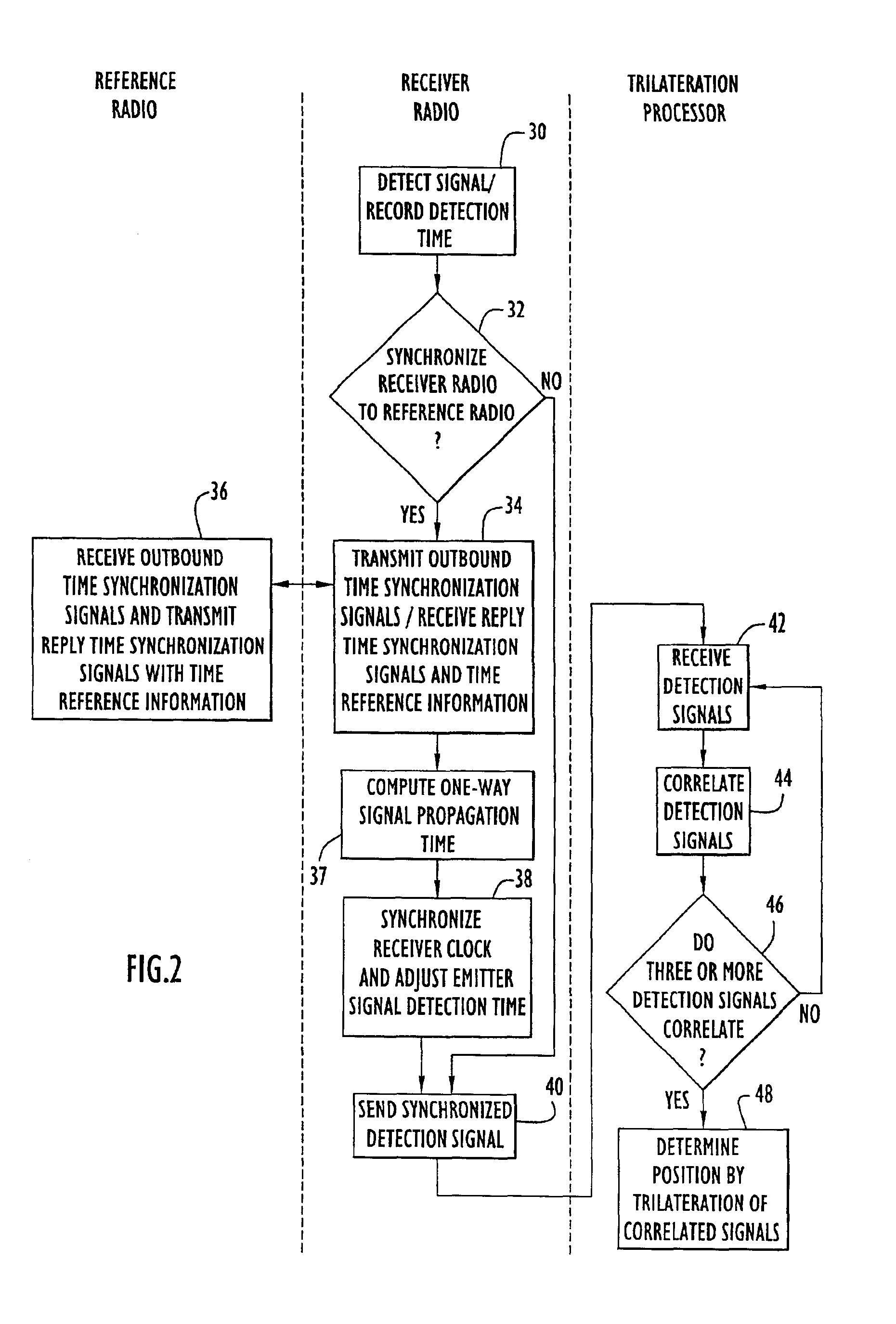System for determining position of an emitter
a technology for estimating systems and emitters, applied in direction finders using radio waves, instruments, navigation instruments, etc., can solve the problems of increasing size and cost, reducing mobility, and complicated task of estimating the position of emitter devices, so as to maximize the use of commercially available hardware, minimize design and manufacturing costs, and high accuracy
- Summary
- Abstract
- Description
- Claims
- Application Information
AI Technical Summary
Benefits of technology
Problems solved by technology
Method used
Image
Examples
Embodiment Construction
The following detailed explanation of the figures and of the preferred embodiments of the present invention reveal the methods and apparatus of an emitter position estimating system capable of accurately determining the position of an electromagnetic signal emitter using time-synchronized receiver radios equipped with cost effective, low accuracy clocks.
An exemplary embodiment of the present invention is represented in FIG. 1 with a diagrammatic functional view and is represented in FIG. 2 with a functional process flow view. As indicate in both figures, the process of estimating the position of an emitter using the techniques disclosed in the present invention begins with the detection of an emitted signal from an unknown emitter. In FIG. 1, receiver radios 16, 18, and 20 detect an emitted signal from an unknown emitter 22. In FIG. 2, which presents a unified process flow of events, detection of an emitted signal by all three receiver radios is represented in step 30. As indicated ...
PUM
 Login to View More
Login to View More Abstract
Description
Claims
Application Information
 Login to View More
Login to View More - R&D
- Intellectual Property
- Life Sciences
- Materials
- Tech Scout
- Unparalleled Data Quality
- Higher Quality Content
- 60% Fewer Hallucinations
Browse by: Latest US Patents, China's latest patents, Technical Efficacy Thesaurus, Application Domain, Technology Topic, Popular Technical Reports.
© 2025 PatSnap. All rights reserved.Legal|Privacy policy|Modern Slavery Act Transparency Statement|Sitemap|About US| Contact US: help@patsnap.com



